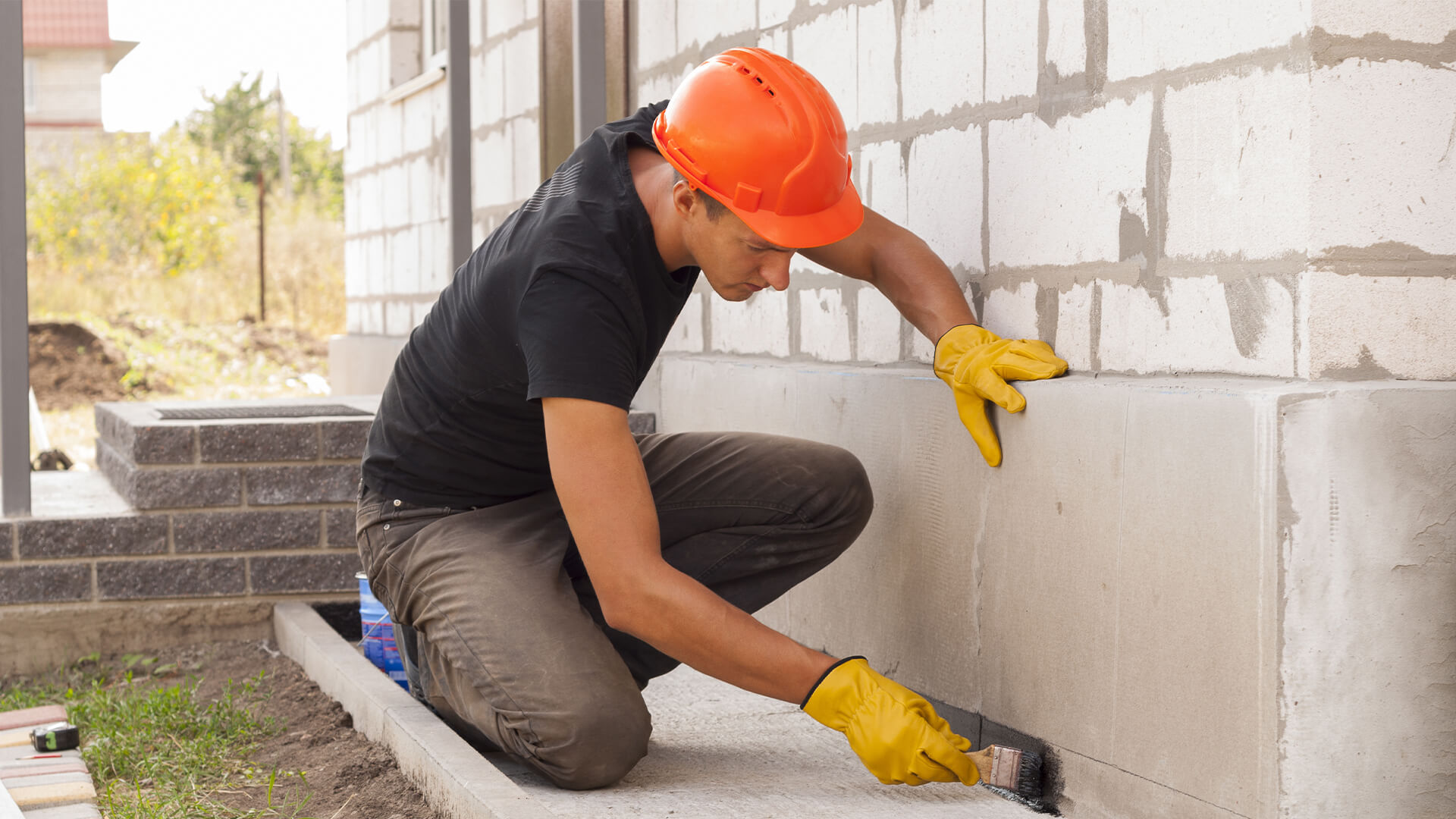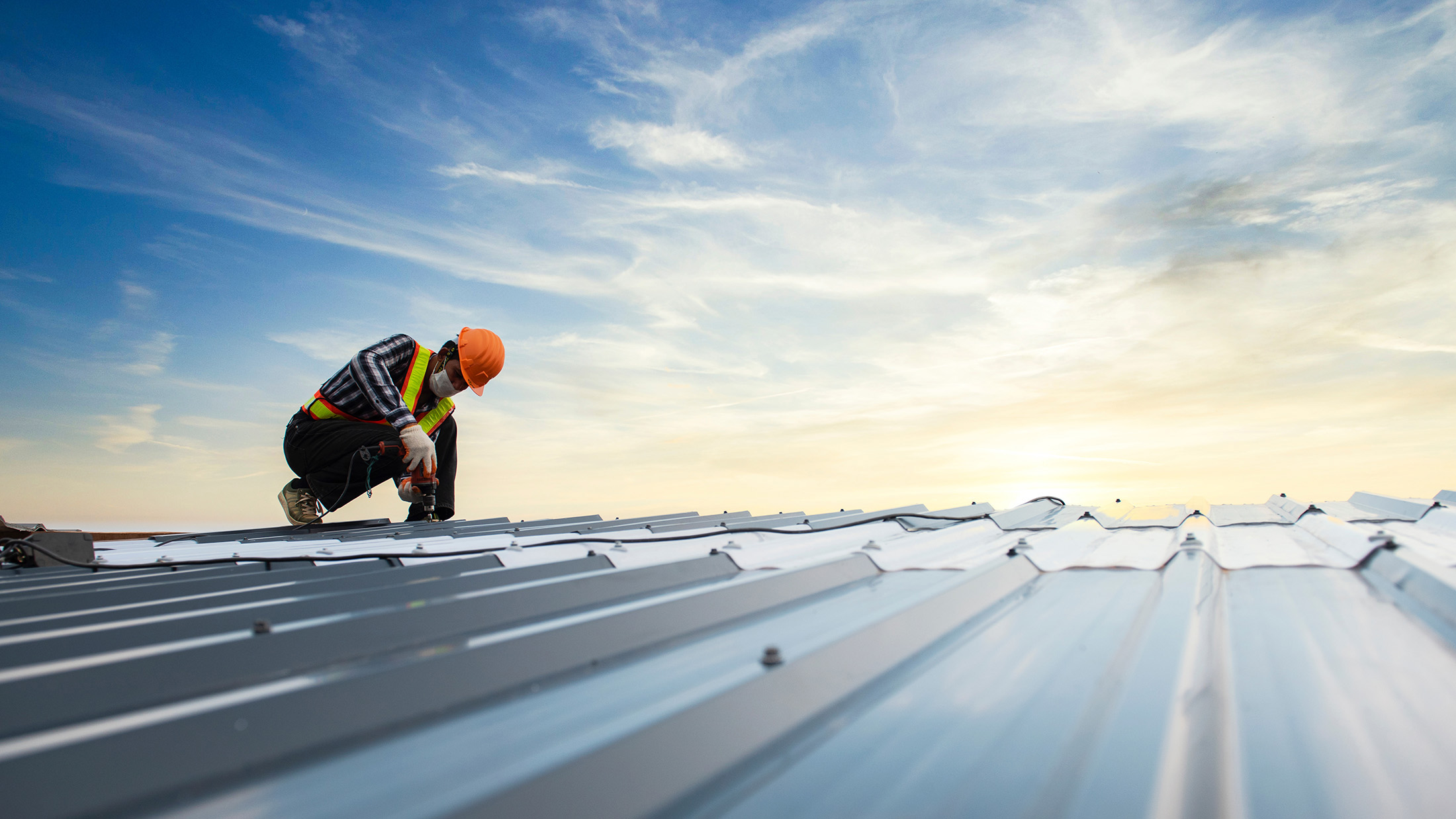Why Waterproofing Is Vital for Durable Frameworks: an In-Depth Analysis
Waterproofing plays an essential function in the long life of frameworks. It functions as a barrier versus dampness, which can lead to significant concerns like mold and deterioration. Understanding the numerous waterproofing approaches and their ramifications is critical for property owners. The repercussions of neglecting this facet can be severe. Exploring these aspects discloses not simply the need of waterproofing, yet also its broader influence on residential property worth and safety.
Comprehending Waterproofing: Interpretation and Value
Waterproofing acts as an important obstacle against wetness breach, guarding frameworks from possible damage. It encompasses numerous methods and products made to avoid water penetration right into structures, guaranteeing long life and functionality. The value of waterproofing can not be overstated, as it safeguards versus a variety of concerns, consisting of mold growth, damage of materials, and structural weakening.Effective waterproofing options can include membrane layers, coatings, and sealants, each customized to details environments and structural styles. By developing a protective layer, these services assist preserve a completely dry inside, which is crucial for the health and wellness of passengers and the conservation of home value.Moreover, investing in waterproofing at the building phase is considerably more cost-effective than dealing with water-related problems after they arise. Understanding the principles of waterproofing is essential for engineers, builders, and property proprietors intending for long lasting, durable structures that endure the test of time and environmental obstacles.

The Influence of Water Damage on Structural Honesty
Water damage positions considerable threats to structural stability, mostly via the growth of mold and mold. These microorganisms not just compromise indoor air high quality yet also result in product destruction with time. Furthermore, long term direct exposure to moisture can compromise structural elements, boosting the chance of collapse or failing.
Mold and Mildew Growth
Moisture intrusion positions a considerable danger to the architectural honesty of structures, bring about the proliferation of mold and mold. These fungis thrive in damp environments, frequently settling in covert areas such as wall cavities, under flooring, and in ceilings. Their growth not just develops undesirable discolorations and undesirable smells however likewise contributes to a decline in indoor air top quality, posing wellness threats to passengers. Mold and mildew and mildew can compromise materials like timber and drywall, causing additional moisture retention and creating a cycle of damages. Early discovery and removal are vital to avoid comprehensive growth, emphasizing the requirement of effective waterproofing measures. Resolving dampness problems promptly can shield both the wellness of residents and the longevity of the framework.
Structural Weakening Threats
Unchecked wetness intrusion can bring about serious architectural weakening, endangering the integrity of structures. Water damage often impacts foundational parts, such as beam of lights, columns, and wall surfaces, leading to compromised load-bearing capability. Prolonged direct exposure to moisture can create products like wood to rot and steel to rust, weakening their architectural homes. This deterioration might lead to fractures, bowing, or perhaps devastating failings if left unaddressed. French drain installation Omaha. Additionally, water seepage can threaten the soil underneath structures, causing settling or moving that additional aggravates structural dangers. Because of this, implementing efficient waterproofing options is crucial in protecting a building's structural integrity, stopping pricey repairs, and guaranteeing security for passengers. Correct upkeep and proactive steps are crucial in minimizing these significant dangers connected with water damages
Kinds Of Waterproofing Approaches and Products
Waterproofing approaches and products play a critical duty in safeguarding frameworks from water damages. Trick strategies consist of membrane layer waterproofing, which supplies a physical obstacle; fluid waterproofing options that develop a seamless layer; and cementitious waterproofing alternatives understood for their sturdiness and convenience of application. Recognizing these numerous strategies is essential for selecting one of the most ideal approach for details construction requirements.
Membrane Waterproofing Techniques
Membrane layer waterproofing strategies are crucial for securing frameworks from the damaging effects of water seepage. These techniques entail the application of water resistant membranes that produce an obstacle versus dampness. The two primary kinds of membrane layer systems are sheet membranes and liquid-applied membranes. Sheet membranes, normally made from products such as rubberized asphalt or thermoplastic, are upraised and can be rolled out and adhered to surface areas. In comparison, liquid-applied membranes are used as a fluid and cure to develop a seamless layer. Both kinds offer versatility and longevity, satisfying various applications, consisting of roofing systems, cellars, and structures. Correct installment and upkeep of these membrane layers ensure long-term protection, improving the life-span and integrity of the frameworks they guard.
Fluid Waterproofing Solutions
Fluid waterproofing options represent a flexible option to typical membrane layer systems. These remedies generally include the application of fluid coverings that treat to create a smooth, long lasting obstacle against water seepage. Numerous types of fluid waterproofing products are offered, consisting of polyurethane, asphalt, and acrylic-based formulations. Each type supplies one-of-a-kind properties, such as versatility, adhesion, and UV resistance, making them appropriate for varied applications. The application procedure commonly entails splashing or rolling the fluid onto surfaces, enabling protection of intricate forms and information, which decreases possible powerlessness. Fluid waterproofing services are particularly beneficial for areas with activity, such as joints and cracks, as they can accommodate structural changes without endangering honesty, making certain durable defense for frameworks.
Cementitious Waterproofing Options
Various cementitious waterproofing options are available, offering efficient remedies for different building demands. These systems generally consist of a mix of cement, sand, and additives, making them ideal for both indoor and outside applications. Amongst the preferred read here selections are crystalline waterproofing products, which respond with moisture to form a waterproof obstacle within the concrete matrix. Additionally, versatile cementitious finishings give boosted flexibility, fitting small structural movements without compromising the waterproofing integrity. It is additionally usual to make use of cementitious sealers for joints and fractures, making sure complete security versus water infiltration. Overall, cementitious waterproofing alternatives are valued for their longevity, convenience of application, and compatibility with different substratums, making them a favored choice find here in modern-day building techniques.
Long-Term Price Cost Savings Via Effective Waterproofing
Buying efficient waterproofing solutions can significantly lower lasting costs for building owners and designers. By stopping water breach, these remedies reduce damage to structural elements, decreasing the need for pricey repair services and upkeep gradually. Waterproofing also shields interior surfaces and home furnishings, reducing replacement costs and boosting the overall life expectancy of the property.Moreover, efficient waterproofing can bring about power savings by enhancing insulation and decreasing humidity-related problems. This causes reduced home heating and cooling expenditures, adding to a much more sustainable economic model for property management.Additionally, the implementation of waterproofing actions can enhance property worth by guaranteeing a dry, risk-free, and sturdy setting. While the preliminary financial investment in waterproofing may seem significant, the long-lasting financial benefits far surpass the in advance prices, making it a sensible choice for any individual entailed in building and construction or property administration.

The Duty of Waterproofing in Building Regulations and Laws
Waterproofing plays a substantial duty in building ordinance and regulations, showing its relevance in modern construction methods. These codes are created to ensure safety and security, durability, and sustainability in buildings, emphasizing the need for effective waterproofing steps. Different national and regional building ordinance detail certain demands for waterproofing products and methods, especially in areas prone to water intrusion, such as basements and foundations.Compliance with these regulations not only safeguards structures from moisture-related damage however likewise safeguards public health by avoiding mold development and architectural instability. Assessors commonly evaluate waterproofing elements throughout the building and construction process to assure adherence to established requirements. As climate change raises the regularity of severe weather condition events, the role of waterproofing in building ordinance is anticipated to progress, potentially leading to more stringent guidelines. In general, the additional resources integration of waterproofing in governing structures underscores its critical role in attaining resilient, durable structures.
Instance Studies: Effective Waterproofing Solutions
Successful waterproofing solutions have actually been executed throughout different tasks, showcasing cutting-edge methods that enhance architectural integrity and long life. One significant example is the remodelling of the historical Smith Tower in Seattle, where sophisticated membrane layer systems were utilized to safeguard the framework from water invasion. This approach not only maintained the building's visual yet likewise expanded its lifespan.In another instance, a large business building in Miami made use of crystalline waterproofing technology, which responds with dampness to form an obstacle versus water. This service confirmed effective against the city's high moisture and hefty rainfall.Additionally, a bridge in San Francisco underwent a substantial waterproofing treatment making use of epoxy coverings, which considerably reduced maintenance expenses and boosted sturdiness. These instance researches highlight the efficiency of customized waterproofing approaches in varied environments, highlighting the value of picking appropriate techniques to attend to certain obstacles and guarantee the longevity of frameworks.
Finest Practices for Implementing Waterproofing Approaches
Implementing effective waterproofing techniques needs cautious planning and adherence to finest methods - Sump pump installation & replacement Omaha. Initially, it is essential to perform a comprehensive site assessment to identify potential locations of water access. This analysis educates the choice of suitable materials and strategies customized to certain environmental conditions. Making use of high-grade, sturdy waterproofing membrane layers can significantly enhance defense versus moisture.Additionally, appropriate installation strategies are necessary; guaranteeing that surfaces are clean and cost-free from pollutants promotes perfect adhesion. Regular maintenance checks need to be arranged to identify any kind of indications of wear or damage, permitting timely repairs.Moreover, incorporating drain systems can effectively take care of water overflow, preventing buildup around structures. Enlightening all workers associated with building about waterproofing demands further assurances consistency and adherence to ideal methods. Ultimately, a positive technique to waterproofing can significantly expand the lifespan of frameworks and reduce long-lasting upkeep costs
Regularly Asked Questions
Exactly How Does Waterproofing Affect Energy Performance in Buildings?
Waterproofing significantly boosts energy performance in structures by preventing dampness intrusion. This minimizes the demand for heating & cooling, keeps consistent indoor temperature levels, and inevitably lowers energy intake, adding to long-lasting sustainability and cost savings.
Can Waterproofing Be Applied to Existing Frameworks?
Waterproofing can indeed be related to existing structures. Different approaches, such as membrane layers, finishings, and sealers, enable homeowner to enhance protection against wetness, consequently lengthening the framework's honesty and reducing potential damage in time.
What Are the Indications of Inadequate Waterproofing?
Indications of poor waterproofing include water discolorations on wall surfaces, mold and mildew development, peeling off paint, stuffy smells, and wetness in cellars - Landscape drainage Omaha. These indicators suggest potential structural damages and the demand for prompt interest to avoid additional wear and tear
Exactly How Frequently Should Waterproofing Be Evaluated or Kept?
Waterproofing must be checked at least annually, specifically in areas with heavy rainfall or ever-changing temperature levels. Routine maintenance warranties very early detection of issues, advertising structural integrity and lengthening the life expectancy of the building.
Exist Eco-Friendly Waterproofing Options Available?
Environment-friendly waterproofing options are increasingly readily available, utilizing lasting materials such as bio-based polymers and all-natural sealers. These alternatives not just safeguard frameworks however also decrease environmental influence, attracting environmentally mindful contractors and homeowner.